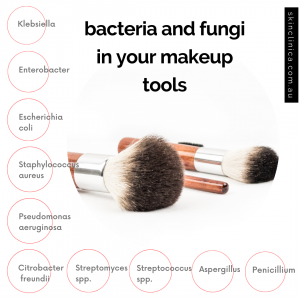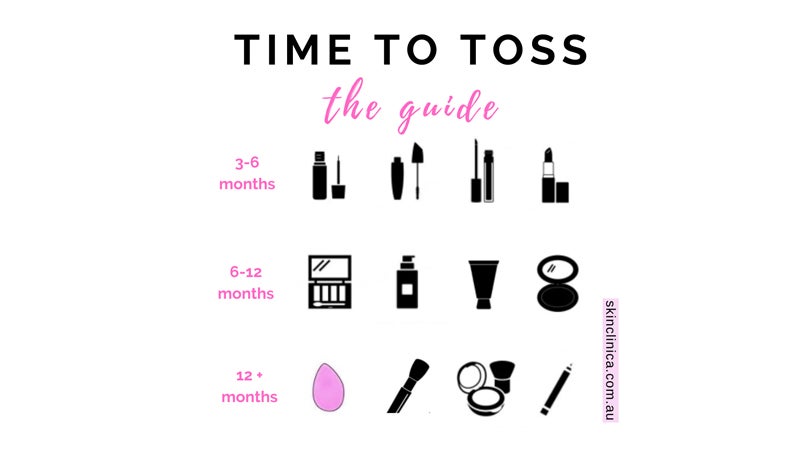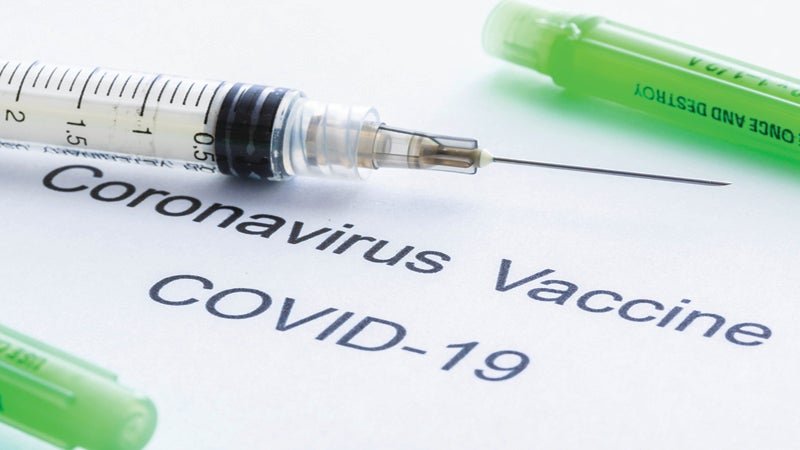Skin expert issues warning to prevent infections
Published 10:30 am Sunday, March 7, 2021
|
Getting your Trinity Audio player ready...
|
AUSTRALIA/EINPresswire.com/ — Skin care expert calls on manufacturers to provide better guidance to consumers on when to throw out cosmetics and makeup sponges to prevent skin infections and potential serious health issues.
Hot and humid conditions in bathrooms create the perfect breeding ground for the proliferation of colonies of bacteria and fungi in cosmetics and makeup sponges or beauty blenders. Yet most people are completely unaware of when to throw out old cosmetics and makeup sponges.
Anna Marie Greco of Skin Clinica says she is seeing more cases of clients with unexplained itchy rashes, skin breakouts and inflamed eyelids.
“This is even happening to people who normally have skin that is the envy of everyone else, so it was quite a mystery until I started asking questions to find out more about what may have triggered these skin issues,” Anna Marie says.
“When I couldn’t find any changes in their skin care routine or lifestyle, I asked further questions and found they don’t regularly throw out old cosmetics or clean their makeup sponges and other tools.
“There are billions of microorganisms lurking in makeup brushes, sponges and applicators. These are a breeding ground for bacteria and fungi, and even viruses.
“COVID has made us acutely aware of the need to follow heightened hygiene practices in relation to the virus, but many of us are overlooking the risk of bacteria, fungi and other viruses in our cosmetics and makeup tools.
“People believe that they can keep using their cosmetics and makeup tools for years, not understanding the risk they carry. Unlike skin care products, many cosmetics sold do not carry any POA (period-after-opening) symbol.
“The industry needs to take a more consistent approach and do more to make consumers aware of the risks”, she says.
Studies have revealed that most people overlook the need to throw out their old cosmetics and clean their makeup sponges and tools. Yet these can cause acne, rashes and infections, ranging from mild to severe, and potentially even put someone’s life at risk.
A major study in the UK in 2019 found that 70-90% of cosmetics tested were contaminated with microorganisms. They have been found to contain bacteria such as Bacillus, Enterobacter, Staphylococcus spp. and Pseudomonas spp. and fungi Aspergillus, Penicillium and Candida.
“Check all the dates on your cosmetics, skin care products and sunscreens. Over time, the preservatives in these break down and unwelcome stowaways begin to multiply to the point that the products are no longer safe to use, especially those that allow you to dip your fingers in,” according to Anna Marie
Due to the seriousness of the issue, the US FDA is looking closely into the microbiological safety of cosmetics, citing that injuries can be serious.
Makeup sponges and tools are highly contaminated with microrganisms. These include bacteria Citrobacter freundii, Enterobacter, Escherichia coli, Klebsiella, Pseudomonas aeruginosa, Staphylococcus aureus, Streptococcus spp. and Streptomyces spp. and fungi Aspergillus and Penicillium.
The UK study also revealed that 93% of makeup sponges don’t get cleaned regularly and 64% get dropped and reused – and let’s not mention what germs can be found on bathroom floors!
Anna Marie says she has seen an uptick in skin issues that don’t appear to have an apparent cause.
“The use of masks explains why there is more ‘mask acne’, but it doesn’t explain a lot of other skin issues in areas not covered by masks or in those who don’t wear a mask on a daily basis,” she says.
“In some cases, it may be due to the use of old cosmetics — such as compact foundation, blush, eyeshadow and lip gloss — and unclean makeup tools, such as sponges and applicators. In light of these results, the industry really needs to review the guidance it provides,” says Anna Marie.
“We should start being more cautious about how long we keep cosmetics for. We know that any cosmetics used around the eyes, nose and mouth present a greater risk of potential systemic health issues. We know that lip glosses, lipsticks and eye shadows, for example, become quickly laden with bacteria and fungi. So should we really be telling consumers that they can keep using these products for two plus years after first use?
“Now is the perfect time to do go through all your makeup tools and products and do a full cosmetic cleanup and clearout. We do it for our wardrobes, so why don’t we do it for our bathroom stashes!”
Anna Marie recommends throwing out mascaras, liquid eye liners, cream concealers, cream eye shadows, lip glosses and lipstick every 3-6 months. Makeup compacts, blushers, bronzers and powder eye shadows should be safe for about for 6-12 months. Airless pump foundations and beauty tools can last for 12+ months, but don’t keep them for too much longer.
She advises throwing out any makeup sponges or brush applicators that are stubbornly dirty or heavily used after 12 months, as they end up harbouring greater contaminants over time, particularly the more resistant varieties.
“Cleaning does not necessarily eliminate all bacteria and fungi, so it’s best to get rid of those old grimy tools and do a complete clean of the rest,” she says.
She recommends doing a weekly clean of all makeup tools.
Best way to clean makeup sponges and tools instructions and video available on website.






